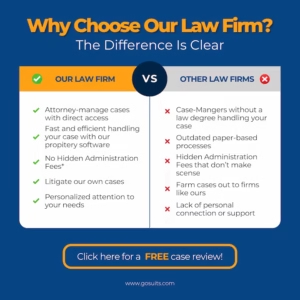Being involved in a car accident can leave you navigating an overwhelming set of challenges. From physical recovery to handling the financial impact, you may find yourself wondering how hiring a lawyer fits into the equation. One of the most common concerns people have is understanding how much of a settlement will go toward legal fees. Gaining clarity on how legal fees work can help you feel more prepared and confident in your decisions.
The Basics of Legal Fees
Most lawyers who represent individuals in car accident cases operate on what’s known as a contingency fee basis. This fee structure means that the lawyer is compensated only if they successfully recover compensation for you. Instead of paying upfront or hourly, the lawyer’s fee is calculated as a percentage of your settlement or court award. If your case does not result in compensation, you do not owe any legal fees for the lawyer’s work.
The percentage taken as a contingency fee typically falls within a range, often between 25% and 40%, depending on the details of the case. These specifics are determined during an initial consultation and are formalized in a written agreement. This arrangement helps ensure that you do not face financial barriers when seeking legal representation.
Factors That Influence Legal Fees
Several factors can affect how much of your settlement is taken as legal fees:
- Complexity of the Case: Cases that involve detailed investigations, multiple parties, or unique legal issues often require more time and resources, which can influence the percentage.
- Litigation or Trial: Cases that proceed to trial typically involve additional work, such as depositions and court proceedings, leading to a higher percentage.
- Lawyer’s Approach: Different lawyers may approach fee structures slightly differently, and discussing these details early can help you understand what to expect.
How the Settlement Is Divided
Once a settlement is reached, the first deduction typically goes toward the lawyer’s contingency fee, calculated as a percentage of the total amount. For example, if the agreed percentage is 33%, that amount will be subtracted from the settlement. In addition to legal fees, other costs related to pursuing your case may also be deducted. These could include filing fees, charges for expert evaluations, and costs associated with obtaining medical records or other documentation. The specific handling of these expenses—whether deducted before or after the lawyer’s percentage—is generally outlined in your agreement.
What remains after deductions is your portion of the settlement. This amount is used to address damages such as medical bills, lost wages, and other financial challenges you’ve faced as a result of the accident. Your lawyer should provide a detailed explanation of these calculations, ensuring there is no confusion about how the settlement is distributed.

Advantages of Contingency Fees
Contingency fees offer several benefits:
- No Financial Risk: You don’t have to pay anything upfront, allowing you to focus on recovering without worrying about additional financial strain.
- Accessibility: This fee structure allows individuals who may not have the resources for hourly fees to still access legal representation.
- Aligned Interests: The contingency fee model creates a partnership between you and your lawyer. Both parties share the same goal of obtaining fair compensation, which builds trust and fosters collaboration throughout the legal process.
- Reduced Stress: Knowing you won’t face legal fees unless your case is successful can reduce some of the stress associated with filing a claim. You can focus on healing and rebuilding while your lawyer handles the complexities of the case.
Questions to Ask Your Lawyer
It’s natural to have questions about legal fees when consulting with a lawyer. To help you fully understand the arrangement, consider asking:
- What is the percentage range for the contingency fee?
- How are case-related expenses handled?
- Will the fee percentage change if the case goes to trial?
- Can I see a breakdown of how the settlement will be distributed?
Why Transparency Is Important
Transparency is key when it comes to legal fees. A clear and detailed fee agreement protects both you and your lawyer by setting expectations from the beginning. This document should outline the agreed percentage, how expenses are handled, and any other relevant details.
Take the time to carefully review this agreement, and don’t hesitate to ask questions if anything feels unclear. An open and honest dialogue ensures you are informed and confident as you move forward with your case.








